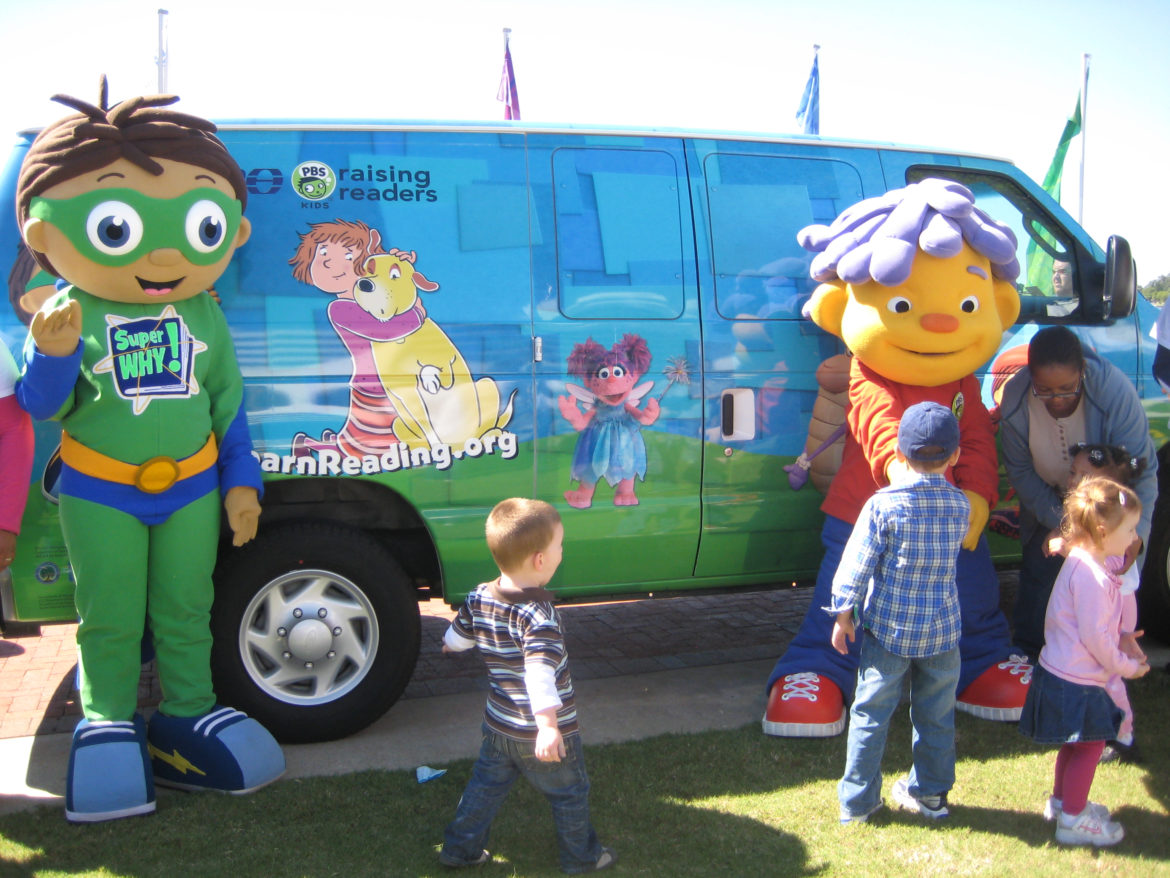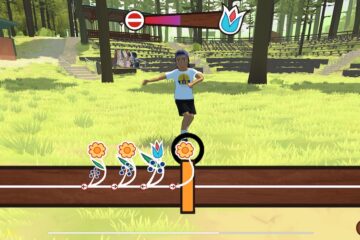PBS’s Playtime Pad fits with station work on early childhood education

WHRO in Norfolk, Va., will use PBS’s Playtime Pad device in its educational outreach work, which includes a Raising Readers mobile educational van. (Image: WHRO)
Several stations focusing on early childhood learning are applauding PBS’s decision to get into the educational device business.
In a branding deal announced Oct. 17, PBS is offering its first digital tablet for kids, the Playtime Pad. The WiFi-capable device from electronic manufacturer Ematic comes preloaded with some 25 PBS Kids games and 120 video clips. It can access more content through PBS apps.
Parents can monitor their child’s educational progress through the PBS Parents Play and Learn app. Settings allow parents to customize the Android device, choose time limits and manage what children can access. The interactive PBS Kids multicast channel, launching in January, will also be available on the tablet.
Ematic has produced a similar device, the Sprout Channel Cubby, for several years. “The key point of differentiation for the PBS Kids Playtime Pad is our content,” said Maria Vera, PBS Kids spokesperson.
That’s the most appealing aspect for public broadcasting education and engagement executives.
Several members of the 11-station Community Collaboratives for Early Learning and Media, part of the federal Ready To Learn literacy initiative, have been discussing the need for a tablet with PBS apps, said Hannah Rawiszer, who directs education and community engagement at WCTE in Cookeville, Tenn.
For engagement work using mobile devices, “it’s so time-consuming to load the apps onto all the tablets,” she said. Rawiszer also likes the Playtime Pad’s kid-friendly design. “Instead of just handing them an iPad or tablet that’s plain black or white, this is colorful and inviting,” she said.
The pad complements the educational and digital work being done by WHRO in Norfolk, Va. The station is nearing a deal with the city to provide broadband internet to low-income communities.
“We already do a lot of parent training and early childhood education using PBS resources,” said Brian Callahan, v.p. for education. “Soon we will provide the public WiFi. We were just missing a device — and now we have that.”
KLRU in Austin, Texas, just wrapped up a first round of four workshops training families with school-age kids to use the PBS Kids ScratchJr app, which lets kids create interactive stories and games as they learn basic coding concepts. “Now we can offer tablets as an incentive for completing the entire workshop series,” said Benjamin Kramer, v.p., educational services. “So this is great timing.”
The pad will be available for $79.99, starting Nov. 6, at Best Buy and Walmart as well as on shop.pbskids.org. PBS is offering a discount on bulk purchases by member stations, which can buy tablets for $50 each through Nov. 15.
Lesli Rotenberg, s.v.p. of children’s media and education, told g.m.’s in an Oct. 17 email that PBS is offering the discount “to make this new device as accessible as possible.”
“The Playtime Pad offers a new opportunity for your stations and funders to engage families locally,” Rotenberg wrote, “and can be leveraged through your work with partners such as schools and libraries, or as part of a membership package.”
Reaching kids where they are
Stations involved in the Community Collaboratives group are working to extend the educational impact of all PBS Ready To Learn assets. They’re training community partners and families to use the programs, mobile apps and online games. The Playtime Pad fits well into those efforts.

WHRO in Norfolk, Va., will use PBS’s Playtime Pad in its educational outreach work, which includes a Raising Readers mobile educational van. (Photo: WHRO)
WCTE has previously provided mobile devices to schools for afterschool learning activities and local libraries for learning labs, Rawiszer said. Next up is a mobile learning lab to bring the resources — including the Playtime Pad — deep into rural areas.
“The van will be stocked with devices and will have a tent with a table,” Rawiszer said. “We can take it into places of high need that don’t have access to the technology.” The vehicle will be wrapped with PBS images so kids and parents will associate it with WCTE.
WHRO has been doing similar work since 1991. It started with one van focusing on literacy subjects. “That success led to a STEM van, which recently got funding,” said Angie Callahan, director of children’s services (and Brian’s spouse). That mobile lab transports digital devices, and soon the new PBS tablets, to help kids learn about science, technology, education and math.
This spring, while doing ScratchJr app training in low-income areas, “everyone said one of the best things was the kids got the opportunity to work on a tablet,” Angie Callahan said. She also appreciates the affordable price for those families.
Kramer at KLRU sees value to the Playtime Pad beyond the learning opportunities. “We want to differentiate ourselves in the media space not only through quality products and the work we do with families,” he said, “but also in giving good counsel for how to properly use digital devices.”
PBS notes that the pad fits into its ongoing “PBS Anywhere” multiplatform initiative.
“New digital platforms are among the ways that we aim to help stations engage audiences locally,” Dawn Ciccone, v.p., brand licensing, said in a statement to Current. The Playtime Pad allows families access to PBS content “when they are on the go.”
Questions, comments, tips? sefton@current.org






